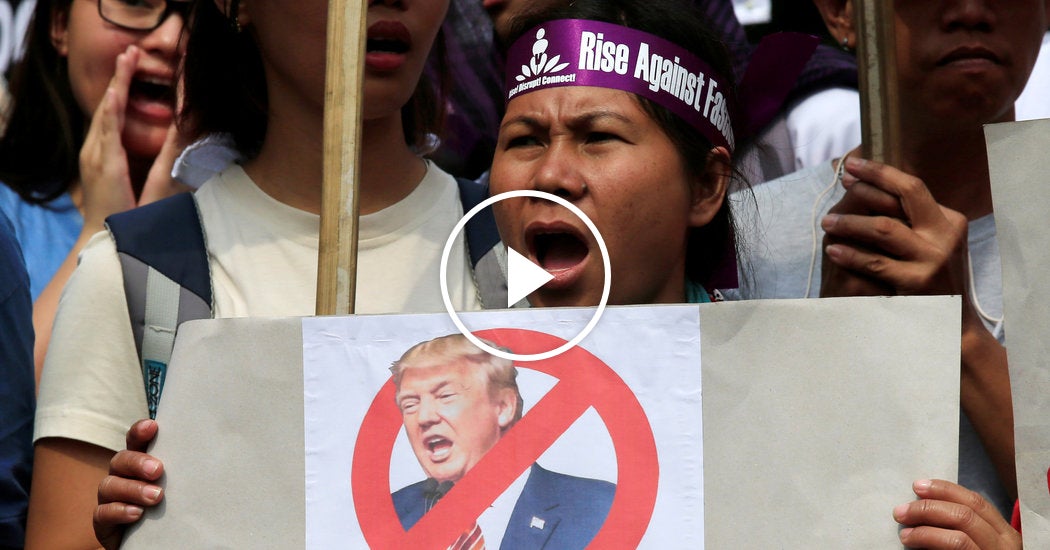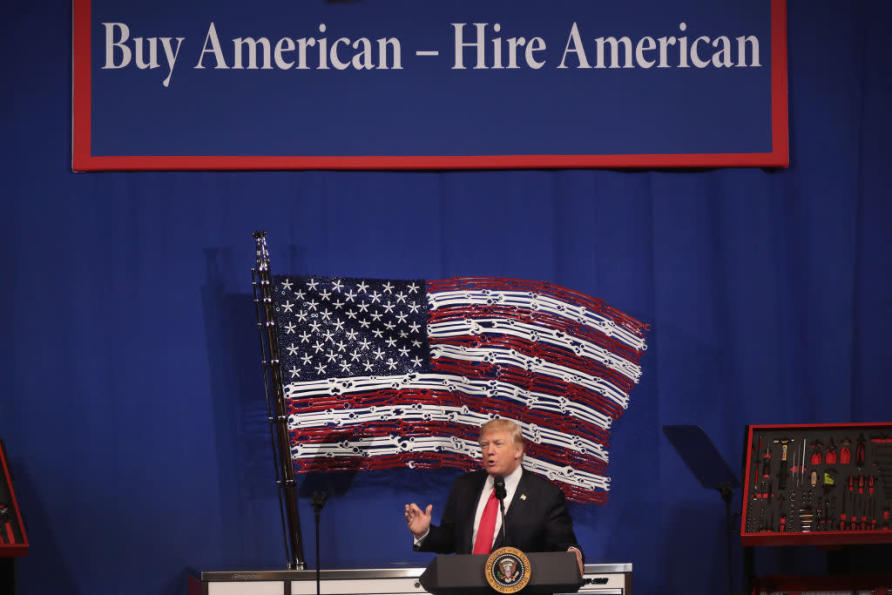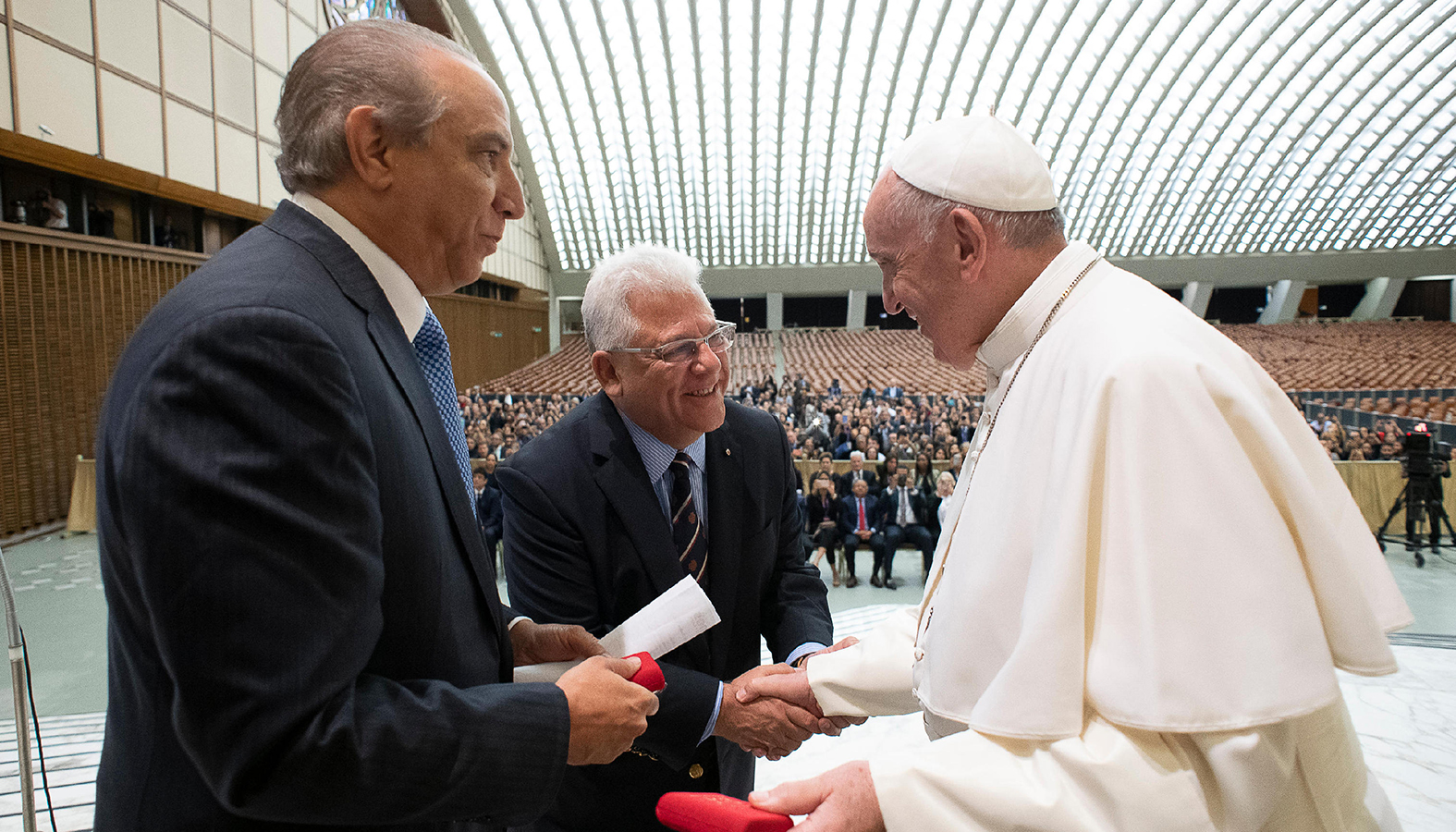American Protests Against Trump: A Cross-Country Overview

Table of Contents
Early Protests and the Inauguration
The resistance to the Trump presidency began even before the inauguration. Following the contentious 2016 election, protests erupted across the country, fueled by concerns about Trump's rhetoric, policies, and perceived threat to democratic norms. The period leading up to the inauguration saw a surge in demonstrations, culminating in the massive Women's March on Washington and in cities across the globe.
- Size and scope of the Women's March: Millions participated in the Women's March, making it one of the largest single-day protests in US history. Sister marches were held in hundreds of cities worldwide, showcasing the global nature of the opposition to Trump's agenda.
- Other significant early protests and their locations: Protests against Trump's proposed immigration policies took place in major airports across the country following his executive order on immigration. Cities like New York, Los Angeles, Chicago, and Boston became hubs for frequent demonstrations.
- Common themes and slogans used in these early protests: Slogans such as "Not my president," "Love trumps hate," and "Resist" became rallying cries, reflecting the widespread feeling of opposition to Trump's policies and ideology. These early protests laid the groundwork for sustained opposition throughout his presidency.
Geographic Distribution of Protests
American protests against Trump weren't confined to a few major cities. While major metropolitan areas like New York City, Los Angeles, and Washington D.C. saw the largest and most frequent protests, demonstrations occurred in towns and cities across all 50 states. The intensity and focus of these protests often varied geographically.
- Examples of major protest hotspots: New York City, with its large and politically active population, consistently hosted large-scale demonstrations. Los Angeles, known for its progressive leanings, also witnessed significant protest activity. Washington D.C., being the seat of power, became a focal point for numerous rallies and marches.
- Comparison of protest activity in liberal vs. conservative states: Naturally, states with larger liberal populations tended to see more frequent and larger protests. However, even in more conservative states, pockets of resistance and smaller-scale demonstrations occurred, reflecting the diverse range of opinions within the American population.
- Mention protests in smaller towns and rural areas: While less frequent and publicized than those in large cities, protests also occurred in smaller towns and rural areas, demonstrating that opposition to Trump's presidency extended beyond urban centers. These local demonstrations often highlighted issues specific to the local community.
Key Issues Fueling the Protests
Numerous policy decisions and actions by the Trump administration fueled the American protests against Trump. The protests weren't monolithic; instead, they reflected a broad spectrum of concerns. The issues that consistently triggered widespread outrage included:
- Specific Trump policies that led to significant protest activity: The aforementioned immigration ban, the repeal of the Affordable Care Act, environmental rollbacks, and Trump's response to various social issues generated major protest activity.
- The role of social media in organizing and amplifying protests: Social media played a crucial role in organizing, publicizing, and coordinating these protests, allowing for rapid mobilization and dissemination of information. Hashtags like #resist and #womensmarch became powerful tools for mobilization.
- Connections between specific protests and related legislative battles: Many protests were directly linked to specific legislative battles and policy debates, aiming to influence the outcome of these political processes. The protests provided a visible manifestation of public opinion and often served as counterpoints to legislative actions.
The Evolution of Protest Tactics and Organization
The methods and organization of American protests against Trump evolved over time. Initially, many protests involved large-scale marches and rallies. As the Trump presidency progressed, the protests incorporated a wider range of tactics and organizational structures.
- Examples of different protest tactics: Beyond marches and rallies, protesters employed civil disobedience, such as sit-ins and occupations, to disrupt governmental operations and raise awareness. Artistic expression and creative forms of protest also became increasingly prominent.
- The role of social media platforms in coordinating protests: Platforms like Twitter, Facebook, and Instagram were critical in coordinating and disseminating information about protests, helping to overcome geographic barriers and mobilizing diverse groups of people.
- The impact of changing political landscapes on protest strategies: The changing political landscape and evolving strategies of the Trump administration influenced the tactics and focus of the protests, leading to adaptations in organizational methods and protest strategies.
Conclusion
American protests against Trump represented a widespread and sustained expression of dissent, spanning the geographical and ideological spectrum of the United States. These demonstrations reflected a diversity of concerns, ranging from immigration policies to environmental regulations and healthcare. The scale and intensity of these protests highlighted the depth of opposition to the Trump administration's policies and approach to governance. Understanding the history of American protests against Trump is crucial for informed civic engagement. Continue researching the impact of these widespread demonstrations and explore ways to participate in shaping the future of American politics.

Featured Posts
-
 Trump Supporter Ray Epps Defamation Lawsuit Against Fox News Jan 6 Falsehoods Alleged
Apr 22, 2025
Trump Supporter Ray Epps Defamation Lawsuit Against Fox News Jan 6 Falsehoods Alleged
Apr 22, 2025 -
 The Trump Administrations Trade Agenda And Its Consequences For Us Finance
Apr 22, 2025
The Trump Administrations Trade Agenda And Its Consequences For Us Finance
Apr 22, 2025 -
 Pope Francis A Legacy Of Compassion
Apr 22, 2025
Pope Francis A Legacy Of Compassion
Apr 22, 2025 -
 Ftc Challenges Court Ruling On Microsofts Activision Blizzard Purchase
Apr 22, 2025
Ftc Challenges Court Ruling On Microsofts Activision Blizzard Purchase
Apr 22, 2025 -
 End Of An Era Ryujinx Emulator Development Stopped By Nintendo
Apr 22, 2025
End Of An Era Ryujinx Emulator Development Stopped By Nintendo
Apr 22, 2025
